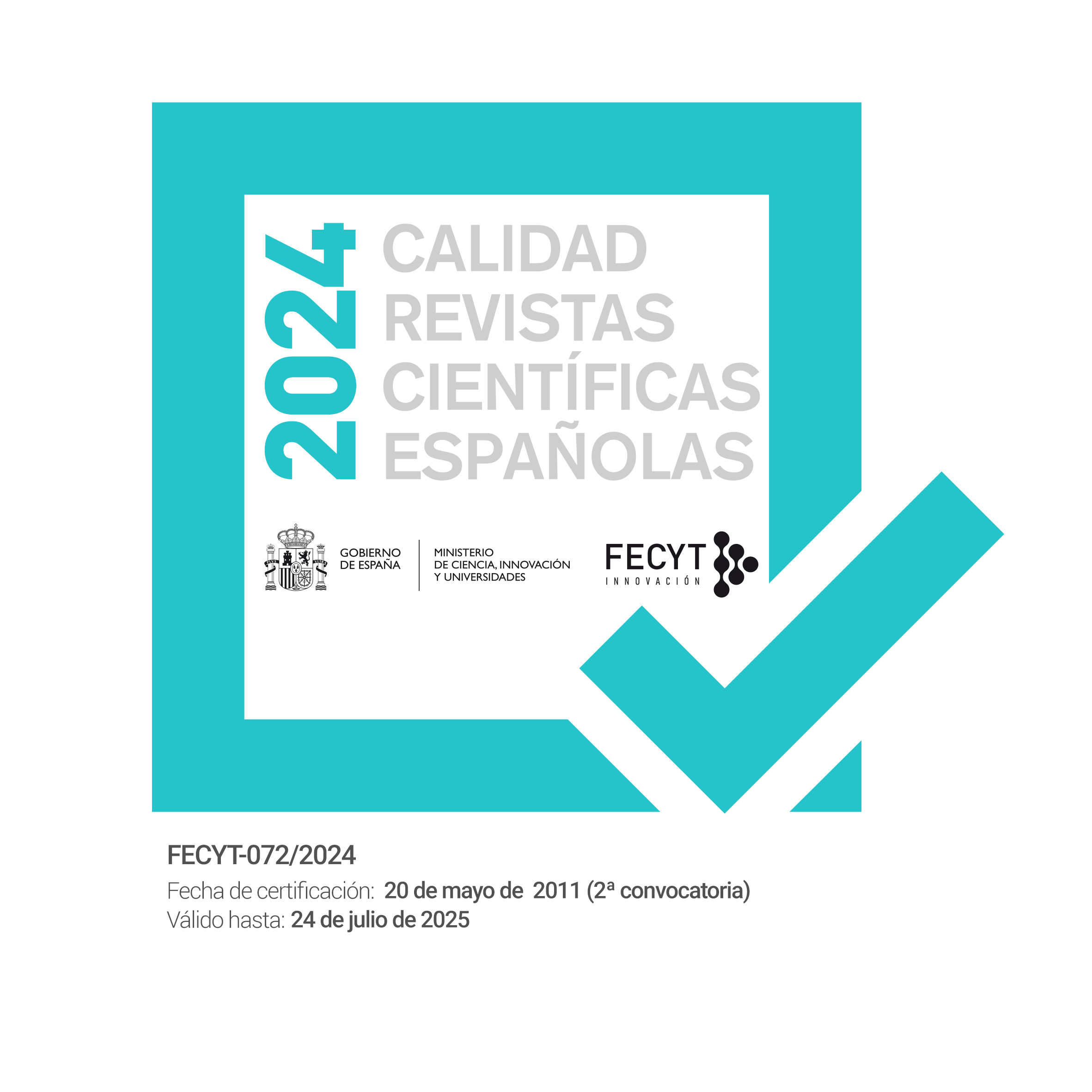Aplicación de las cámaras trampa de tiempo situadas cerca de un recurso luminoso, para el registro del ritmo de atracción a la luz de los insectos (Lepidoptera: Noctuidae)
DOI:
https://doi.org/10.57065/shilap.302Palabras clave:
Lepidoptera, Noctuidae, camera trampa, IsraelResumen
Las cámaras trampa son un medio eficiente para la valoración de la biodiversidad, sin embargo, el empleo de las cámaras trampa, para el estudio de los insectos, todavía está en su comienzo. Contar los insectos voladores y su reconocimiento exacto, son también de gran importancia para el control de plagas. En este trabajo, presentamos un nuevo método que combina el tiempo obtenido con la cámara y una luz, diseñado para calcular la composición de especies macro-Lepidoptera, la presencia y también los ritmos diarios de su atracción a la luz. La ventaja del sistema es que permite el monitoreo del agrupamiento de especies a distancia. Se discuten los ritmos de la atracción a la luz para seis especies de Noctuidae.
Descargas
Citas
CHERNYSHEV, V. B., 1984.– Diurnal rhythms of insects activity: 215 pp. Moscow University Press, Moscow. [in Russian].
COLLETT, R. A. & FISHER, D. O., 2017.– Time- lapse camera trapping as an alternative to pitfall trapping for estimating activity of leaf litter arthropods.– Ecology and Evolution, 7: 7527-7533. DOI: https://doi.org/10.1002/ece3.3275
EPSKY, N. D., MORRILL, W. L. & MANKIN, R. W., 2008.– Traps for Capturing Insects: 3887-3901.– In J. L. CAPINERA (ed.). Encyclopedia of Entomology: CCLII + 4346 pp. Springer, Dordercht.
HOGEWEG, L., ZEEGERS, T., KATRAMADOS, I. & JONGEJANS, E., 2019a.– Smart Insect Cameras. Biodiversity Information Science and Standards (BISS).– Conference Abstract, 3: e39241, doi: 10.3897/biss.3.39241. DOI: https://doi.org/10.3897/biss.3.39241
HOGEWEG, L., ZEEGERS, T., KATRAMADOS, I. & JONGEJANS, E., 2019b.– Automatic insect identification for better grasp on biodiversity. Available from https://phys.org/news/2019-05-automatic-insect-identification-graspbiodiversity.html.
JONASON, D., FRANZÉN, M. & RANIUS, T., 2014.– Surveying Moths using light traps: Effects of weather and time of year.– Plos One, 9(3): 1-7. DOI: https://doi.org/10.1371/journal.pone.0092453
KRAVCHENKO, V. D., 1986.– On correlations between the mobility and flight towards light in moths.– Zoologichesky Zhurnal, 65(6): 859-866. [in Russian].
KRAVCHENKO, V. D., 1981.– Interrelations between flight towards light and mobility in Helicoverpa armigera.– Zoologichesky Zhurnal, 9(8): 1267-1269. [in Russian].
KRAVCHENKO, V. D., 1984.– Behavior of the cotton bollworm (Heliothis armigera) in natural conditions.– Zoologichesky Zhurnal, 63(5): 682-686. [in Russian].
KRAVCHENKO, V. D., 1987.– Daily rhythm of flight in three cutworm species (Lepidoptera: Noctuidae) toward synthetic sex pheromones in Azerbaijan.– Zoologichesky Zhurnal, 66(9): 1421-1423. [in Russian].
KRAVCHENKO, V. D., FIBIGER, M., HAUSMANN, A. & MÜLLER, G. C., 2007b.– Noctuidae.– In G. C. MÜLLER, V. D. KRAVCHENKO, A. HAUSMANN, W. SPEIDEL, J. MOOSER & T. J. WITT. The Lepidoptera of Israel, 2: 400 pp. Pensoft Series Faunistica 63.
KRAVCHENKO, V. D., FIBIGER, M., HAUSMANN, A. & MÜLLER, G. C., 2007a.– Erebidae Noctuidae.– In G. C. MÜLLER, V. D. KRAVCHENKO, A. HAUSMANN, W. SPEIDEL, J. MOOSER & T. J. WITT. The Lepidoptera of Israel, 1: 168 pp. Pensoft Series Faunistica 63.
KUCERA, T. E. & BARRETT, R. H., 2011.– A History of Camera Trapping: 9-27.– In ALLAN F. O’CONNELL, JAMES D. NICHOLS & K. ULLAS KARANTH. Camera Traps in Animal Ecology. Methods and Analyses: 271 pp. Springer, Tokyo Dordrecht Heidelberg London New York. DOI: https://doi.org/10.1007/978-4-431-99495-4_2
MANOUKIS, N. C. & COLLIER, T. C., 2019.– Computer Vision to Enhance Behavioral Research on Insects.– Annals of the Entomological Society of America, 112(3): 227-235. DOI: https://doi.org/10.1093/aesa/say062
MARTIN, V., MOISAN, S., PARIS, B. & NICOLAS, O., 2008.– Towards a video camera network for early pest detection in greenhouses.– ENDURE International Conference 2008 Diversifying crop protection, 12-15 October 2008. La Grande-Motte, France - Oral presentations.
MEEK, P. D., BALLARD, G. & FLEMING, P. J. S., 2014.– The pitfalls of wildlife camera trapping as a survey tool in Australia.– Australian Mammalogy, 37(1): 13-22. DOI: https://doi.org/10.1071/AM14023
MERCKX, T & SLADE, E. M., 2014.– Macro-moth families differ in their attraction to light: implications for light-trap monitoring programmes.– Insect Conservation and Diversity, 7(5): 453-461. DOI: https://doi.org/10.1111/icad.12068
NEMFC, S. J., 1971.– Effects of Lunar Phases on Light-Trap Collections and Populations of Bollworm Moths.– Journal of Economic Entomology, 64(4): 860-864. DOI: https://doi.org/10.1093/jee/64.4.860
NICHOLS, J. D., O’CONNELL, A. F. & KARANTH, K. U., 2011.– Camera Traps in Animal Ecology and Conservation: What’s Next?: 253-263.– In A. F. O’CONNELL, J. D. NICHOLS & K. ULLAS KARANTH. Camera Traps in Animal Ecology. Methods and Analyses: 271 pp. Springer, Tokyo Dordrecht Heidelberg London New York. DOI: https://doi.org/10.1007/978-4-431-99495-4_14
O’BRIEN, T. G., 2011.– Abundance, Density and Relative Abundance: A Conceptual Framework: 71-97.– In A. F. O’CONNELL, J. D. NICHOLS & K. ULLAS KARANTH. Camera Traps in Animal Ecology. Methods and Analyses: 271 pp. Springer, Tokyo Dordrecht Heidelberg London New York. DOI: https://doi.org/10.1007/978-4-431-99495-4_6
SANCHEZ-BAYO, F. & WYCKHUYSBCD, K. A. G., 2019.– Worldwide decline of the entomofauna: A review of its driver.– Biological Conservation, 232: 8-27. DOI: https://doi.org/10.1016/j.biocon.2019.01.020
SZENTKIRÁLYI, F., 2002.– Fifty-Year-long Insect Survey in Hungary: T. Jermy’s contributions to Light-Trapping.– Acta Zoologica Academiae Scientiarum Hungaricae, 48(1): 85-105.
ZHONG, Y., GAO, J., LEI, Q. & ZHOU, Y., 2018.– A Vision-Based Counting and Recognition System for Flying Insects in Intelligent Agriculture.– Sensors, 18(1489): 1-19. DOI: https://doi.org/10.3390/s18051489
Publicado
Cómo citar
Número
Sección
Licencia
Derechos de autor 2021 L. Pustilnik, M. Nagari, D. Shtivelman, G. Furman, M. Traore, G. Petrány, R. V. Yakovlev, G. Müller

Esta obra está bajo una licencia internacional Creative Commons Atribución 4.0.
El autor retiene sus derechos de marca y patente sobre cualquier proceso o procedimiento dentro del artículo.
El autor retiene el derecho de compartir, distribuir, ejecutar y comunicar públicamente el artículo publicado en SHILAP Revista de lepidopterología, con reconocimiento inicial de su publicación en SHILAP Revista de lepidopterología.
El autor retiene el derecho para hacer una posterior publicación de su trabajo, de utilizar el artículo a publicarlo en un libro, siempre que indique su publicación inicial en SHILAP Revista de lepidopterología.
Cada envío a SHILAP Revista de lepidopterología debe ir acompañado de una aceptación de los derechos de autor y del reconocimiento de autoría. Al aceptarlos, los autores conservan los derechos de autor de su trabajo y aceptan que el artículo, si es aceptado para su publicación por SHILAP Revista de lepidopterología, tendrá una licencia de uso y distribución “Reconocimiento 4.0 Internacional de Creative Commons” (CC BY 4.0), que permite a terceros compartir y adaptar el contenido para cualquier propósito dando el crédito apropiado al trabajo original.
Puede consultar desde aquí la versión informativa y el texto legal de la licencia. La indicación de la licencia CC BY 4.0 debe indicarse expresamente de esta manera cuando sea necesario.
A partir de 2022, el contenido de la versión impresa y digital se encuentra bajo una licencia de uso y distribución “Reconocimiento 4.0 Internacional de Creative Commons” (CC BY 4.0), que permite a terceros compartir y adaptar el contenido para cualquier propósito dando el crédito apropiado al trabajo original.
El contenido anterior de la revista se publicó bajo una licencia tradicional de derechos de autor; sin embargo, el archivo está disponible para acceso gratuito.
Al usar el contenido de SHILAP Revista de lepidopterología publicado antes del año 2022, incluidas figuras, tablas o cualquier otro material en formato impreso o electrónico pertenecen a los autores de los artículos, los autores deben obtener el permiso del titular de los derechos de autor. Las responsabilidades legales, financieras y penales a este respecto pertenecen al autor(es).
En aplicación del Principio de Prioridad del Código Internacional de Nomenclatura Zoologica, no se autoriza el depósito en repositorios, páginas web personales o similares de cualquier otra versión distinta a la publicada por el editor.





























